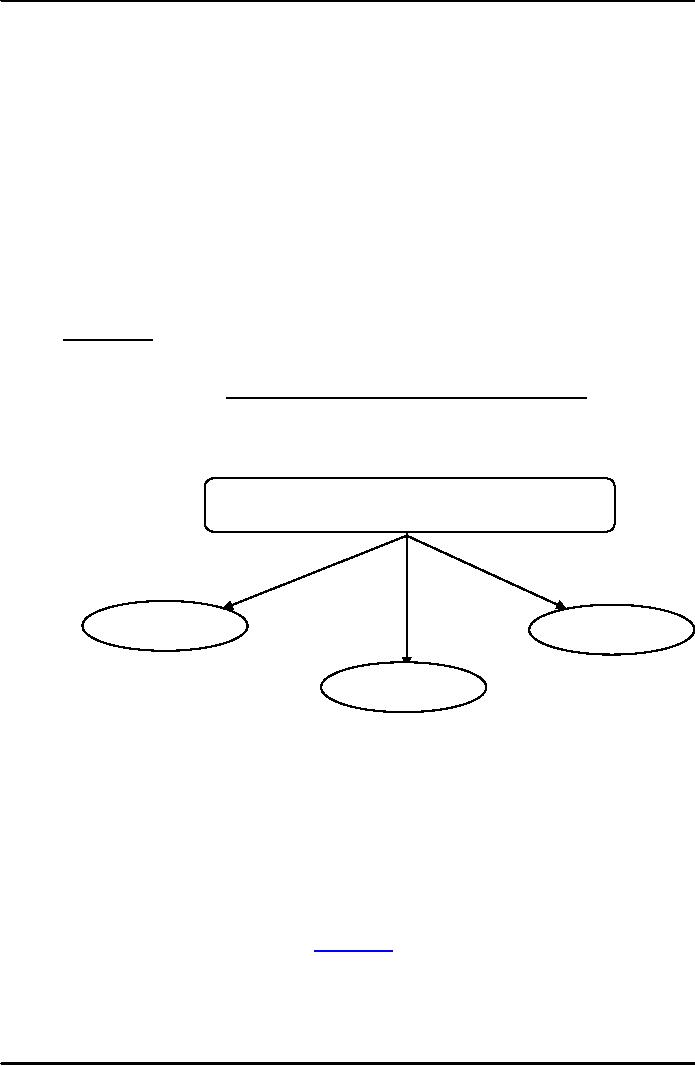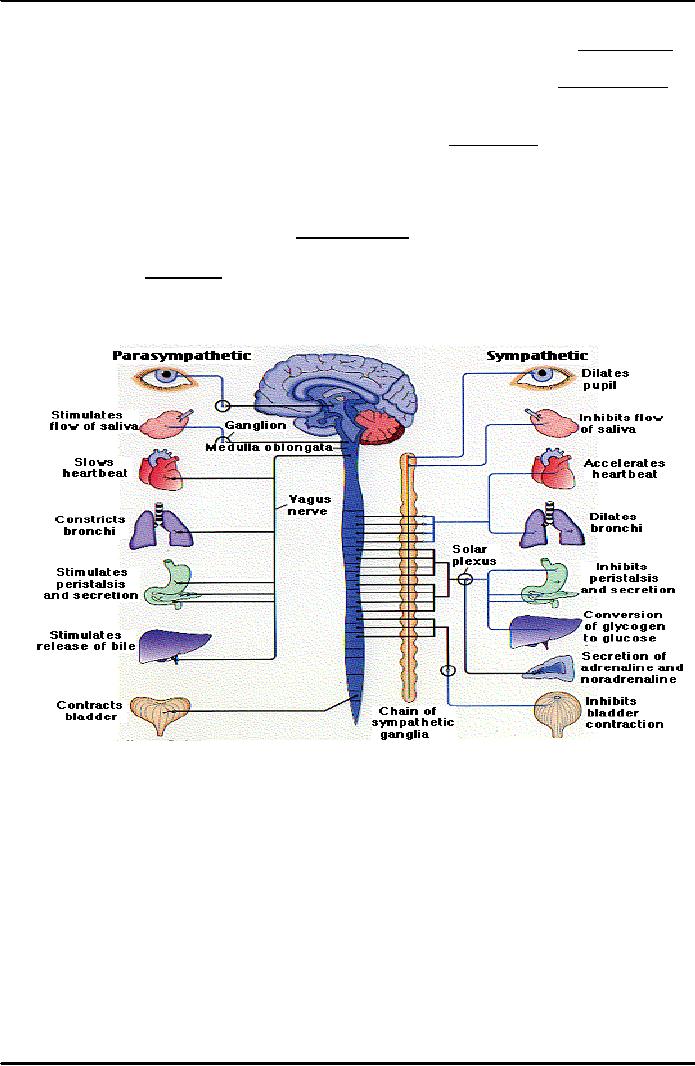 |

Introduction
to Psychology PSY101
VU
Lecture
No. 27
EMOTIONS
I
Defining
Emotions
�
Derived
from the Latin word
"Emovere"
emotion means "to excite,
stir up or agitate".
�
A
response that includes
feelings such as happiness, fear,
sadness, grief, sorrow etc: it is
the
amalgamation
of:
i.
Physiological
arousal,
ii.
Expression
of and
iii.
The
conscious or the cognitive experience of
the situation that influence
behavior.
�
In
psychology, emotion is considered a
response to stimuli that
involves characteristic
physiological
changes--such
as increase in pulse rate,
rise in body temperature,
greater or less activity of
certain
glands,
change in rate of breathing--and
tends in itself to motivate the
individual toward
further
activity.
�
As
human beings, we have all
experienced a range of emotions from
happiness, sadness, love, hate,
to
indifference
along with many other
emotions.
�
Emotions
are feelings, highly
subjective personal tendencies to
respond to internal and
external
variables.
Emotions have cognitive, physiological
and behavioral components. Our
cognitive
appraisals
and evaluations of events in
our lives are key
determinants to our emotional
responses.
Emotions
are accompanied by physiological arousal
of the automatic nervous system
that leads to
physical
symptoms such as increase in respiration
and heart rate. The
behavioral component of
emotions
is expressed in our nonverbal
body language including
facial expressions.
Components
of emotional experience
Physiological
Cognitive
Behavioral
Physiological/
physical component
The
physical component of emotion is a
psychological
arousal that
usually accompanies the emotion
the
body
is feeling. If the body did not
experience this arousal, the intensity of this
emotion would be
greatly
decreased.
During the arousal, the body
experiences a surge of powerful
feelings known as
emotions.
People
who can detect changes in
their arousal level experience
their emotions much more
intensely than
those
who cannot detect the changes in
their arousal level.
Behavioral
component
This
component has been called the
outward expression of our
emotions. Body gestures,
posture, facial
expressions,
and our tone of voice
display what emotions we are feeling.
Many of our facial
expressions are
universal.
For instance, if somebody
has a mad look on their
face, it doesn't matter what
language they
speak
or where they are from,
chances are... they're
mad.
However, some emotional
expressions are
influenced
by our cultures and
society's rules for displaying emotions.
For example, the guards
outside of
Buckingham
Palace are not allowed to
display any emotion on their
face. Some people have
described them
as
looking mad when in reality they
are not.
157

Introduction
to Psychology PSY101
VU
Cognitive
component
The
cognitive component is how we interpret
certain situations or stimulations. This
determines which
emotion
our body will feel.
For example; if you are
alone, sitting in the dark, watching a
scary movie, and
you
hear a loud noise, you
may become scared... fearing
that there is an immediate threat or
that you are in
danger.
This emotional response to this imaginary
threat is just as powerful as it would be
to a real threat.
Our
perception to the imaginary threat is what makes it
feel real to us and causes the
emotion in our body.
Mc
Dougall divided "Emotions"
into three types:
1.
Primary:
Simple emotions as fear, happiness,
anger, disgust etc.
2.
Secondary
Mixture
of various instincts as curiosity, escape
etc.
3.
Derived
Learn
through experiences such as
sadness, boredom etc.
�
Have
you ever thought why
your heart pounds and you
burst into tears on hearing dreadful
news?
�
Why people
become afraid on seeing the
snake?
�
Why
heart beats at a very high
speed while you do jogging/
exercise?
�
Why people
face reddened on hearing the
good news?
YOU
THINK IT IS A SIMPLE PHENOMENON AND YOU
KNOW THE ANSWERS
BUT
IT IS NOT THAT SIMPLE!!!!
�
Our
heart may pound even at the
sight of someone we hate.
Also, before an interview or
presentation.
Or when we are
scared.
�
AND
�
Our
face may blush and turn
red when we are self
conscious, or embarrassed, or
angry.
So!!!!
�
Same
bodily changes may be
manifest in different emotional
experiences.
What
makes the experience different is the
accompanying expression and
cognition.
Assessing
Emotions: Expressions in
Emotions
�
Vocal,
verbal and facial expressions play a
vital role in determining emotions as
well as our
interaction
with the physical world. In
interpreting emotion, the important
things are;
�
Acquaintance
with
the other person.
�
Type
of association with
that person.
�
Deriving
clues from own emotional
experiences in
order to understand other's experiences
as
well.
�
Facial
expressions clearly reflect the intensity of
emotional experiences such as
happiness, sadness,
anger,
and sorrow: all can be
understood from emotional expressions.
However these vary
from
person
to person.
An
adult's voice pattern clearly reflects
their emotions. Variations in
pitch or loudness express
different
types
of emotions.
Emotions
and Cognition: Understanding
Emotions
�
Some
psychologists believed that memory
and cognition are entirely
separate systems that
functions
independently;
some argue that we
emotionally respond to the situation
and then understand
it
cognitively.
�
On the
other hand, other believed
that we first cognitively
evaluate the situation and
then exhibit
the
emotional experience we are facing at
that time.
�
Both
point of view are somehow
supported by the studies and the debate
is still unresolved___ this
may
be due the fact that emotional
experiences varies from
situation to situation and so
the
cognitive
appraisal and the emotional
experiences.
Role
of Emotions in Every Day
Life
�
Emotions
make our life bright
and enlightened, because without the
experience of emotions,
our
life
would be dull, uninteresting, gloomy
and without any
purpose
158

Introduction
to Psychology PSY101
VU
�
Psychologists
identified number of functions of emotions
that have a vital role in
our daily life.
They
are:
�
Stirred
up for the fight or flight
action After
seeing a snake or after an un usual
incident as
natural
disaster; the body is prepared to stirred
up our bodies to face and
deal them.
�
Modifying
the future responses and
behavior Learning
take place after the emotional
state that
prepares
us to manifest appropriate behaviors in
future, i.e., strategies should be
adopted to
minimize
the aftermath of disasters and avoid us
to face the snake.
�
Social
interactions are enhanced
As emotions
are both verbal and
non-verbal so they help
people
to better understand the responses whether they
are being expressed or
not.
Common
Emotions: Range of
Emotions
There
are number of basic emotion
that have been identified by
people in instance. They are:
�
Happy
�
Anger
�
Fear
�
Disgust
�
Surprise
�
Sadness.
J.B.Watson
talked about three main
emotions:
�
Anger
�
Love
�
Fear
He
proved in his experiments
that infants are capable of
these three primary
emotions.
Psychologists
have also identified other
emotion or related expressions
such as contempt,
shame, and
startle.
Robert
Plutchik (1984)
Robert
Plutchik (1984) become able
to determine the basic emotions and
their relationship through
his
studies;
identified eight fundamental emotions.
They are; joy,
anger, sadness, surprise, fear,
acceptance,
disgust
and anticipation. He
named it as Plutchik's emotional
wheel.
�
The
emotions nearer to one another are
closely related, while those
that are opposite to
each
other
are conceptually opposites.
�
The
existence of only these emotions is the
major short coming of this model; believed that
emotions
can better be understood by breaking them into
components/ elements.
Physiological
component of emotions
Many
physiological changes take place in an
emotional state, in the form of
changes in:
�
Heart
rate
�
Pulse
rate
�
Respiration
�
Blood
pressure
�
Digestion
and appetite
�
Muscular
activity
�
Body
temperature
�
Perspiration
�
Endocrine
and neurotransmitter secretions
�
Blood
sugar
�
Salivary
gland activity
�
Pupil
dilation.
159

Introduction
to Psychology PSY101
VU
Role
of the Nervous System in
Emotions
�
All
the emotional experiences and
their expressions are
controlled and regulated by the
autonomic
or
visceral nervous
system.
�
A.N.S.
is an integral part of peripheral nervous
system.
PERIPHERAL
NERVOUS SYSTEM
SKELETAL/SOMATIC
AUTONOMIC
(Sensory
Input,
(Self-Regulatory/
Self-Governing)
Motor
Output)
A.
Peripheral Nervous
System
i.
Autonomic (Self Regulatory /
Self
Governing)
Sympathetic
Parasympathetic
�
Sympathetic
Nervous
Nervous
System
Nervous
system
System
(arousing).
(Arousing)
(Calming)
�
Parasympathetic
Nervous
system
(calming).
ii.
Skeletal/Somatic (Sensory Input,
Motor Output)
B.
Autonomic Nervous System
(A.N.S)
�
Considered
as the "self governing or self-regulatory
mechanism" because of our
involuntary
control
over it.
�
Control
the glands and muscles of
our internal organs such as
heart (heart beat),
stomach
(digestion)
and glandular activity.
�
A.N.S.
has a dual function; i.e.
both arousing and
calming.
Sympathetic
Nervous System
(S.N.S)
�
This
part of A.N.S. arouses us
for defensive action.
�
If
something alarms or enrages
someone, the sympathetic nervous
system will accelerates
heart
beat,
slow digestion, raises the sugar level in
blood, dilates the arteries
and cool the perspiration,
making
one alert and ready for
action.
Parasympathetic
Nervous System
When
the stressful situation
subsides, parasympathetic nervous
system started its
activity.
�
It
produces opposite effect to that of
sympathetic nervous
system.
�
It
conserves energy by decreasing
heartbeat.
�
Lowering
blood pressure.
�
Lowering
blood sugar and so
on.
�
In
daily life situation, both sympathetic
and parasympathetic systems
work together to keep us in
steady
internal state
(homeostasis).
Areas
for Emotions in the
Brain
�
A.N.S.
is the only center of emotions in
P.N.S.
�
Cortical
and sub- cortical structures
are involved in
emotions.
�
Cerebral
cortex is involved in relating the present
and past emotional
experiences; others
involved
in
speed up the heart beat and,
in learning emotional experiences
�
Whereas
sub- cortical regions are
involved in organizing the emotional
expressions.
160

Introduction
to Psychology PSY101
VU
�
Besides
that, the right hemisphere is the most
active in recognizing and
expressing the emotions we
are
feeling. It also responds to emotions being
conveyed by another person's body
language or
tone
of voice. For example, an employer
sarcastically says to an employee
who comes to work
late,
"Glad
to see you could make it today". If the
employee had damage to his
right hemisphere, he
may
only understand the words
and not the sarcastic
undertones, whereas a person,
whose right
hemisphere
is functioning normally, would
usually have a sarcastic
response.
�
The
right hemisphere helps in
our expression through our
tone of voice and by controlling
our
facial
expression. Since the right
hemisphere controls the left side of the
face, the left side
usually
portrays
stronger emotion than the
right side of the face.
Research continues to
accumulate
information
showing the mechanisms in the brain
responsible for negative emotions
reside in the
right
hemisphere, while the left
hemisphere is believed to control
positive emotions. Research
has
shown
that patients who suffer
from manic depression or major
depression have decreased
activity
in
the left prefrontal cortex where the
positive emotions are
produced.
�
Much
of the frontal lobes consists of
areas that are involved
with motivation, thinking,
positive
emotion,
impulse control, and other
emotional responses. Any damage
that occurs to the
frontal
areas
usually produces deficiencies in the
ability to anticipate the results of our
actions.
161
Table of Contents:
- WHAT IS PSYCHOLOGY?:Theoretical perspectives of psychology
- HISTORICAL ROOTS OF MODERN PSYCHOLOGY:HIPPOCRATES, PLATO
- SCHOOLS OF THOUGHT:Biological Approach, Psychodynamic Approach
- PERSPECTIVE/MODEL/APPROACH:Narcosis, Chemotherapy
- THE PSYCHODYNAMIC APPROACH/ MODEL:Psychic Determinism, Preconscious
- BEHAVIORAL APPROACH:Behaviorist Analysis, Basic Terminology, Basic Terminology
- THE HUMANISTIC APPROACH AND THE COGNITIVE APPROACH:Rogers’ Approach
- RESEARCH METHODS IN PSYCHOLOGY (I):Scientific Nature of Psychology
- RESEARCH METHODS IN PSYCHOLOGY (II):Experimental Research
- PHYSICAL DEVELOPMENT AND NATURE NURTURE ISSUE:Nature versus Nurture
- COGNITIVE DEVELOPMENT:Socio- Cultural Factor, The Individual and the Group
- NERVOUS SYSTEM (1):Biological Bases of Behavior, Terminal Buttons
- NERVOUS SYSTEM (2):Membranes of the Brain, Association Areas, Spinal Cord
- ENDOCRINE SYSTEM:Pineal Gland, Pituitary Gland, Dwarfism
- SENSATION:The Human Eye, Cornea, Sclera, Pupil, Iris, Lens
- HEARING (AUDITION) AND BALANCE:The Outer Ear, Auditory Canal
- PERCEPTION I:Max Wertheimer, Figure and Ground, Law of Closure
- PERCEPTION II:Depth Perception, Relative Height, Linear Perspective
- ALTERED STATES OF CONSCIOUSNESS:Electroencephalogram, Hypnosis
- LEARNING:Motor Learning, Problem Solving, Basic Terminology, Conditioning
- OPERANT CONDITIONING:Negative Rein forcer, Punishment, No reinforcement
- COGNITIVE APPROACH:Approach to Learning, Observational Learning
- MEMORY I:Functions of Memory, Encoding and Recoding, Retrieval
- MEMORY II:Long-Term Memory, Declarative Memory, Procedural Memory
- MEMORY III:Memory Disorders/Dysfunctions, Amnesia, Dementia
- SECONDARY/ LEARNT/ PSYCHOLOGICAL MOTIVES:Curiosity, Need for affiliation
- EMOTIONS I:Defining Emotions, Behavioral component, Cognitive component
- EMOTIONS II:Respiratory Changes, Pupillometrics, Glandular Responses
- COGNITION AND THINKING:Cognitive Psychology, Mental Images, Concepts
- THINKING, REASONING, PROBLEM- SOLVING AND CREATIVITY:Mental shortcuts
- PERSONALITY I:Definition of Personality, Theories of Personality
- PERSONALITY II:Surface traits, Source Traits, For learning theorists, Albert Bandura
- PERSONALITY III:Assessment of Personality, Interview, Behavioral Assessment
- INTELLIGENCE:The History of Measurement of Intelligence, Later Revisions
- PSYCHOPATHOLOGY:Plato, Aristotle, Asclepiades, In The Middle Ages
- ABNORMAL BEHAVIOR I:Medical Perspective, Psychodynamic Perspective
- ABNORMAL BEHAVIOR II:Hypochondriasis, Conversion Disorders, Causes include
- PSYCHOTHERAPY I:Psychotherapeutic Orientations, Clinical Psychologists
- PSYCHOTHERAPY II:Behavior Modification, Shaping, Humanistic Therapies
- POPULAR AREAS OF PSYCHOLOGY:ABC MODEL, Factors affecting attitude change
- HEALTH PSYCHOLOGY:Understanding Health, Observational Learning
- INDUSTRIAL/ORGANIZATIONAL PSYCHOLOGY:‘Hard’ Criteria and ‘Soft’ Criteria
- CONSUMER PSYCHOLOGY:Focus of Interest, Consumer Psychologist
- SPORT PSYCHOLOGY:Some Research Findings, Arousal level
- FORENSIC PSYCHOLOGY:Origin and History of Forensic Psychology